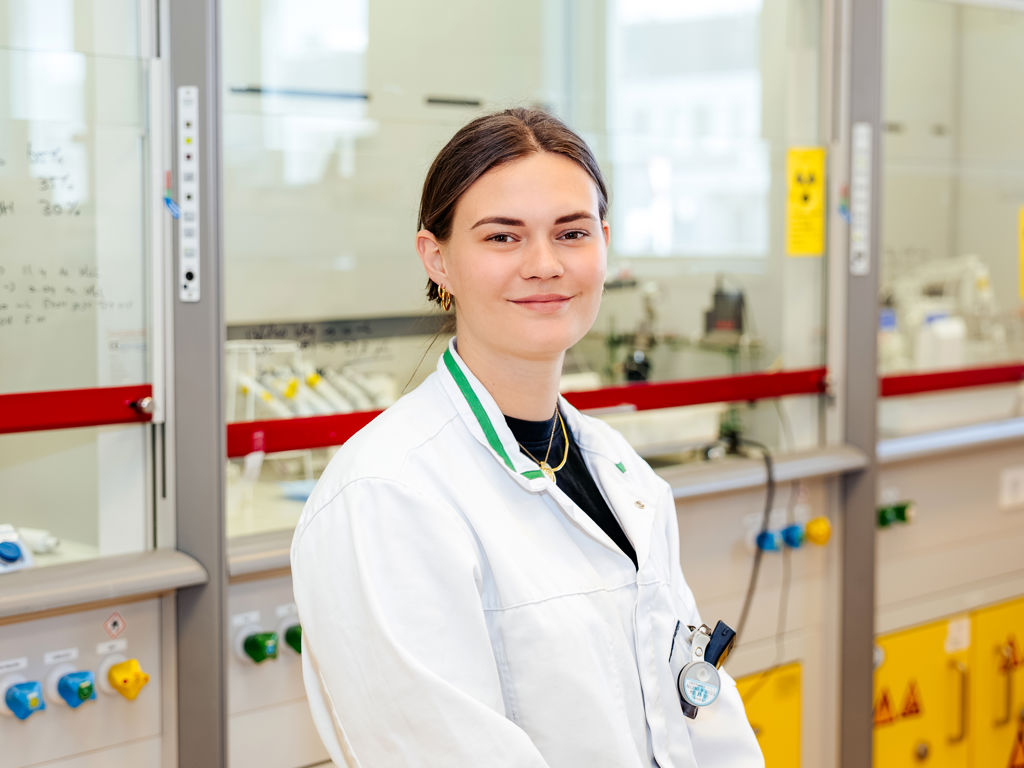‘As a researcher, I’m contributing directly to the development of medicines for prostate cancer’
At the NRG PALLAS lab, Julia Onderwater (25) works with something that’s invisible to the naked eye but which can change lives: lutetium-177. This medical isotope is used in the treatment of prostate cancer, among other conditions. ‘It’s really cool to see how my work is having more and more impact.’
Julia Onderwater
POSITION: Research associate
TEAM: Process Development in the Research & Development department
JOINED NRG PALLAS IN: 2022


After graduating with a degree in chemical engineering, Julia thought she would need to travel all over the country to find work. However, through a recruitment agency, she landed a job at NRG PALLAS, just a 15-minute drive from her home in Anna Paulowna. ‘I never expected to find such a unique company here at the tip of North Holland, especially one that plays such an important role in society!’
‘I feel completely at home here. The work is technically challenging, I’m part of a great team with many young colleagues and what we do is highly relevant. As a researcher, I’m contributing directly to the development of medicines for prostate cancer. That gives my work real meaning.’
Passion in the lab
How does Julia do it? ‘Together with my team, I’m working to improve the production process of lutetium-177,’ she says, visibly excited. ‘This is a radioactive medical isotope that shows great promise in the fight against cancer. Producing it is quite complex. I could talk about it for hours,’ she says with a laugh. ‘When we give tours to partners or other visitors, I always get so enthusiastic about my work that I have to remind myself: keep it simple, Julia!’
A potential treatment for my father
For Julia, the work isn’t just technically interesting, there’s a personal side to it as well. ‘My father has prostate cancer and is currently undergoing chemotherapy. It’s reassuring to know that lutetium therapy could be an alternative. Lutetium-177 is mainly used as a life-prolonging treatment when other options no longer work. But hospitals still can’t use it on a large scale because it’s in short supply worldwide. This also makes it incredibly expensive.’
"Working in nuclear medicine means contributing to medical progress."
‘My father gives me extra motivation to keep improving the production process of lutetium-177. Even if the treatment comes too late or isn’t right for him, I hope it will help the patients who come after.’
Careful purification
So, how does Julia’s team create this promising substance? ‘I’ll try to explain it as briefly as possible: we make it from a metal called ytterbium. When exposed to radiation, a tiny amount of this metal turns into lutetium-177. We then have to separate and purify it extremely carefully. That first part of the process is one of the most enjoyable things to do. I helped develop the machine we use for this, so I know it inside out. That makes working with it even more rewarding.’
Hopeful for the future
‘The lutetium project has now been scaled up to the Field Lab. This is a professional production facility where we manufacture lutetium-177 on a larger scale. This is done under strict medical conditions,’ Julia explains. ‘From a secure room next to the so-called hot cell, we operate robotic arms that produce and purify the lutetium.’
The upscaling is a major source of motivation for Julia. ‘It’s exciting to be part of this project and to see the impact of my work growing. Working in nuclear medicine means contributing to medical progress. I get to do that for 30,000 people every day.’